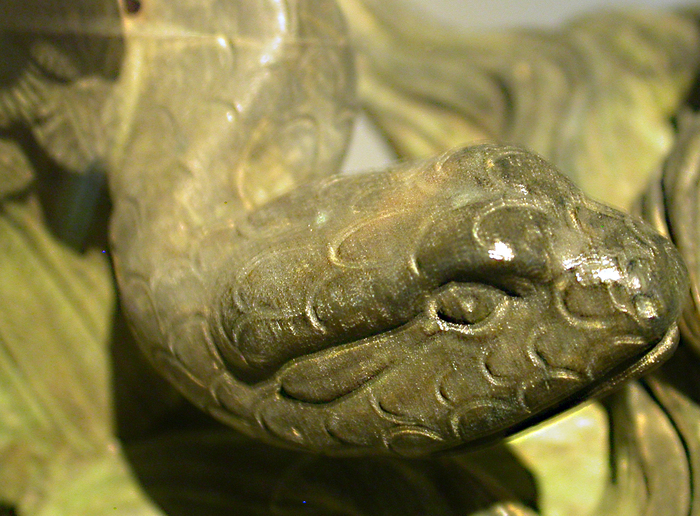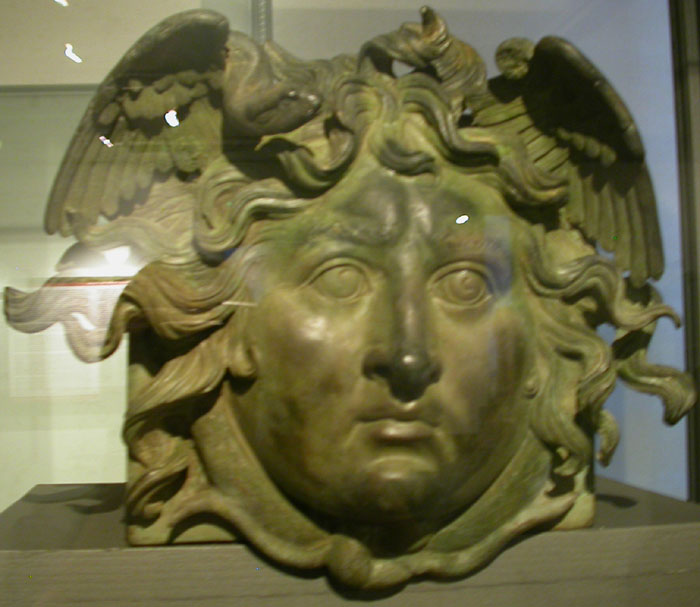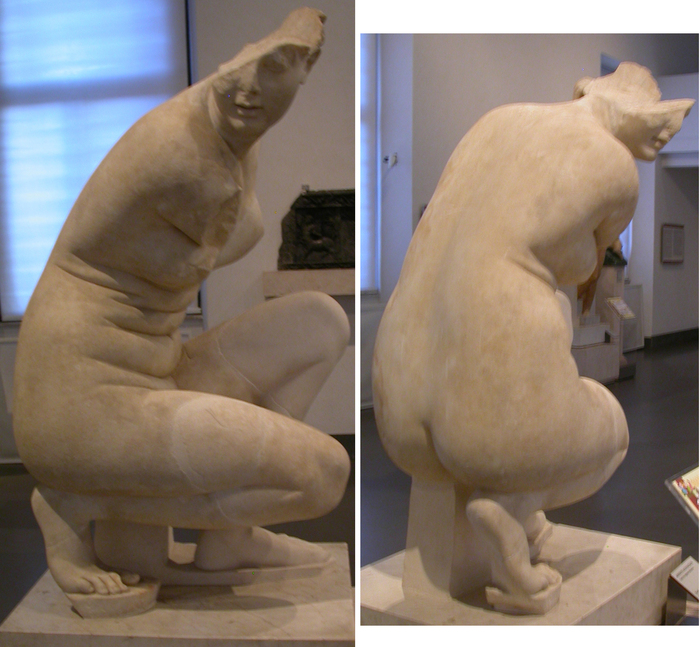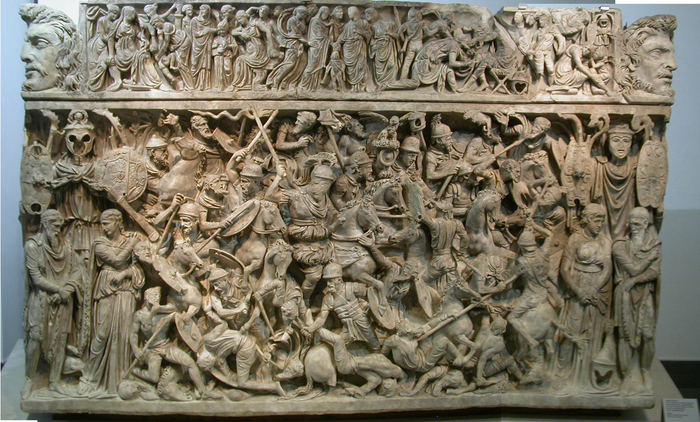
Another knocker from Caligula's door, this time depicting Medusa. 37-41 AD.


Another statue recovered from Hadrian's villa, this is a 3rd century AD copy of a Crouching Venus
type. The original was made in the 3rd century BC and depicted Aphrodite (Venus) bathing, with her arms covering herself as if the viewer had just walked in on the goddess. The style was often copied with many variations - sometimes the goddess seems unaware of her observers, in one she has her fingers buried in her hair as though in the middle of washing it. There is often a small Cupid/Eros flying above her (often all that remains is his hand on her back) holding a mirror for her. While far from the most complete, this Aphrodite is considered one of the most beautiful.

As the Roman empire grew, battles and war preoccupied more and more of the art (and presumably the thoughts) of the Romans. The style of the art slowly changed, too, from a sympathetic and even heroic depiction of the defeated Dacians in the column of Trajan (101 AD) to the later wars of Marcus Aurelius (180 AD), depicting the defeated barbarians as being crushed under the weight of their inevitable destiny. This sarcophagus dates from around 250 AD.